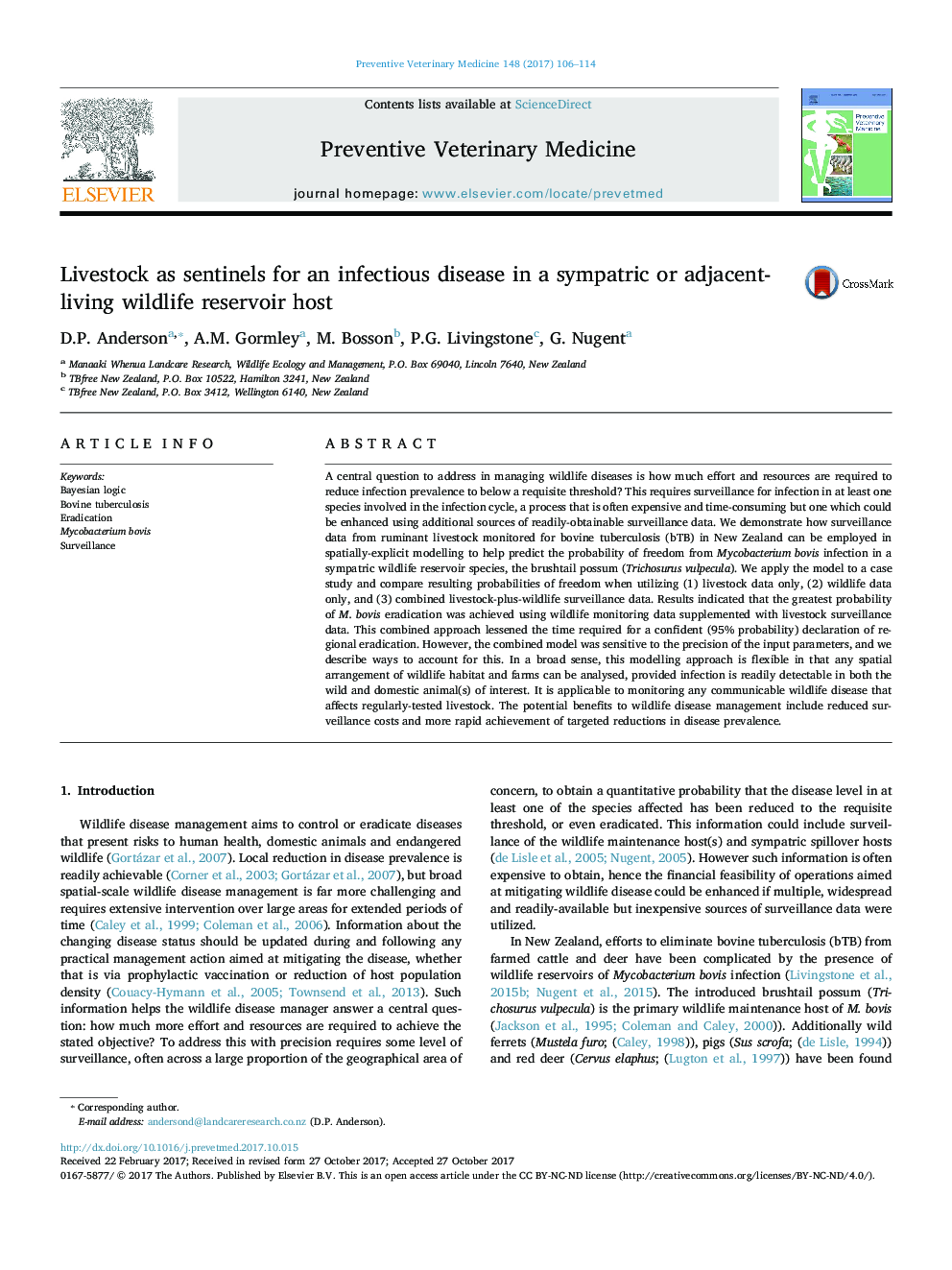| کد مقاله | کد نشریه | سال انتشار | مقاله انگلیسی | نسخه تمام متن |
|---|---|---|---|---|
| 8503636 | 1554142 | 2017 | 9 صفحه PDF | دانلود رایگان |
عنوان انگلیسی مقاله ISI
Livestock as sentinels for an infectious disease in a sympatric or adjacent-living wildlife reservoir host
ترجمه فارسی عنوان
دام به عنوان نگهبانان برای یک بیماری عفونی در یک مخزن حیات وحش سمپاتری یا مجاور
دانلود مقاله + سفارش ترجمه
دانلود مقاله ISI انگلیسی
رایگان برای ایرانیان
کلمات کلیدی
موضوعات مرتبط
علوم زیستی و بیوفناوری
علوم کشاورزی و بیولوژیک
علوم دامی و جانورشناسی
چکیده انگلیسی
A central question to address in managing wildlife diseases is how much effort and resources are required to reduce infection prevalence to below a requisite threshold? This requires surveillance for infection in at least one species involved in the infection cycle, a process that is often expensive and time-consuming but one which could be enhanced using additional sources of readily-obtainable surveillance data. We demonstrate how surveillance data from ruminant livestock monitored for bovine tuberculosis (bTB) in New Zealand can be employed in spatially-explicit modelling to help predict the probability of freedom from Mycobacterium bovis infection in a sympatric wildlife reservoir species, the brushtail possum (Trichosurus vulpecula). We apply the model to a case study and compare resulting probabilities of freedom when utilizing (1) livestock data only, (2) wildlife data only, and (3) combined livestock-plus-wildlife surveillance data. Results indicated that the greatest probability of M. bovis eradication was achieved using wildlife monitoring data supplemented with livestock surveillance data. This combined approach lessened the time required for a confident (95% probability) declaration of regional eradication. However, the combined model was sensitive to the precision of the input parameters, and we describe ways to account for this. In a broad sense, this modelling approach is flexible in that any spatial arrangement of wildlife habitat and farms can be analysed, provided infection is readily detectable in both the wild and domestic animal(s) of interest. It is applicable to monitoring any communicable wildlife disease that affects regularly-tested livestock. The potential benefits to wildlife disease management include reduced surveillance costs and more rapid achievement of targeted reductions in disease prevalence.
ناشر
Database: Elsevier - ScienceDirect (ساینس دایرکت)
Journal: Preventive Veterinary Medicine - Volume 148, 1 December 2017, Pages 106-114
Journal: Preventive Veterinary Medicine - Volume 148, 1 December 2017, Pages 106-114
نویسندگان
D.P. Anderson, A.M. Gormley, M. Bosson, P.G. Livingstone, G. Nugent,
